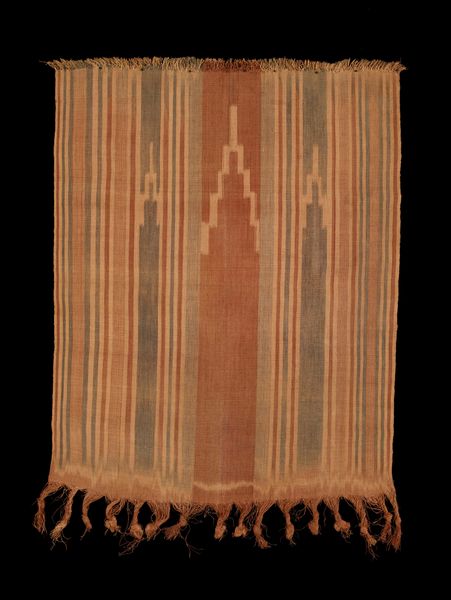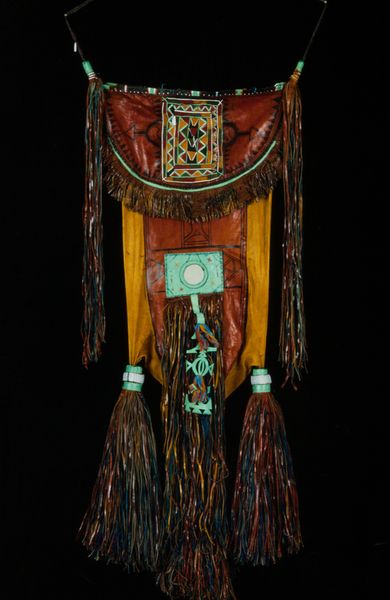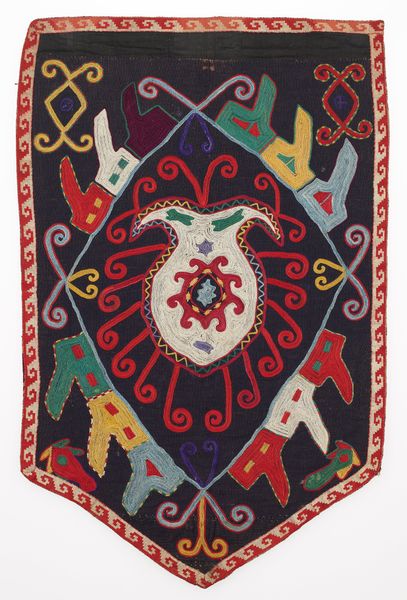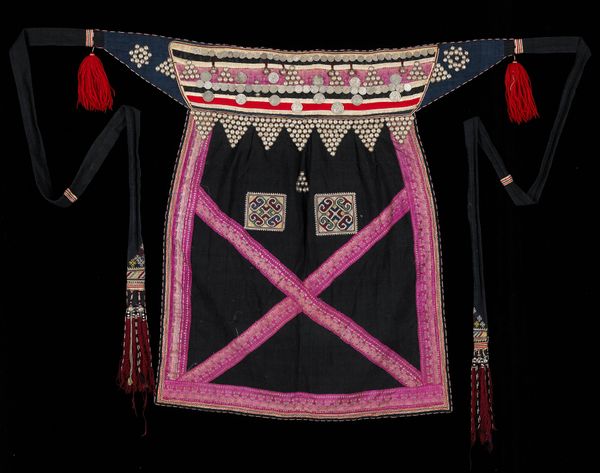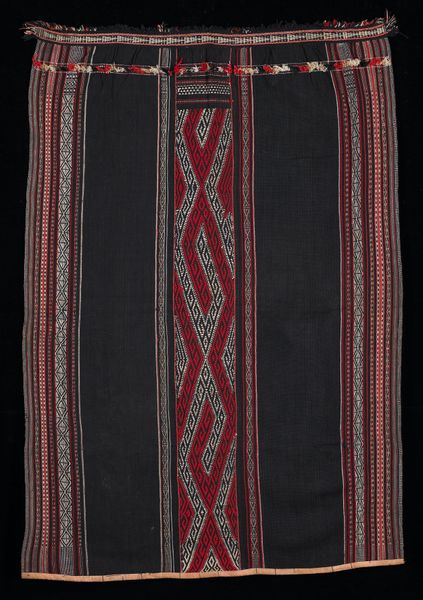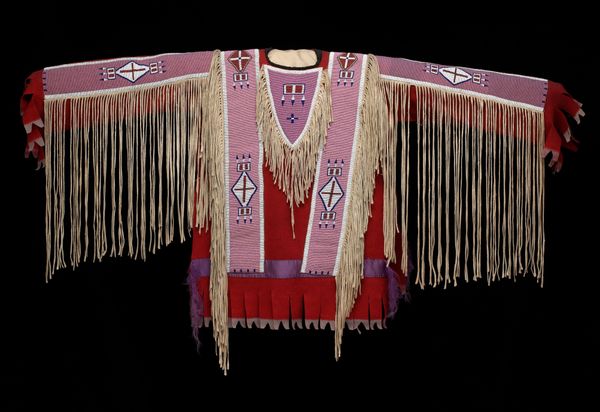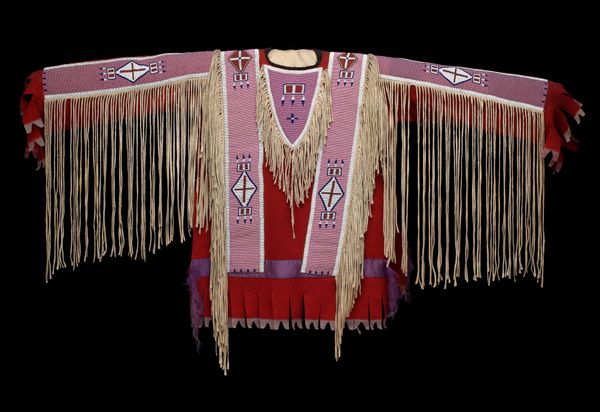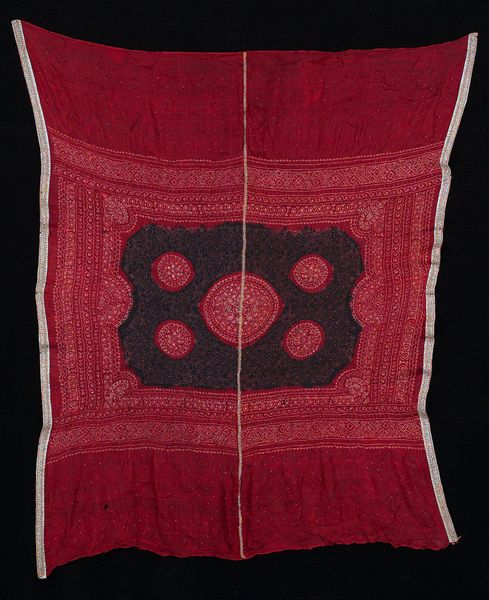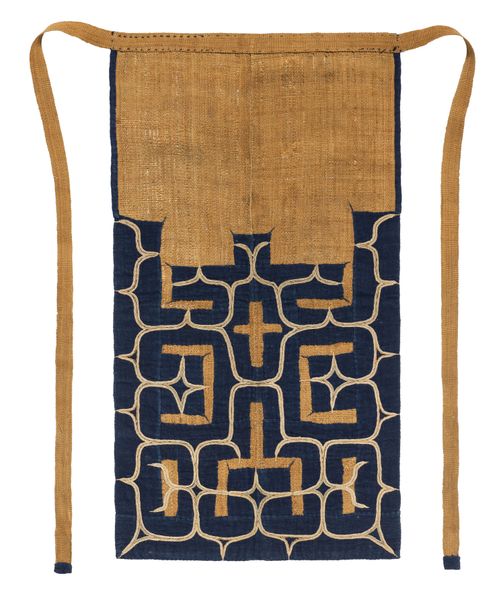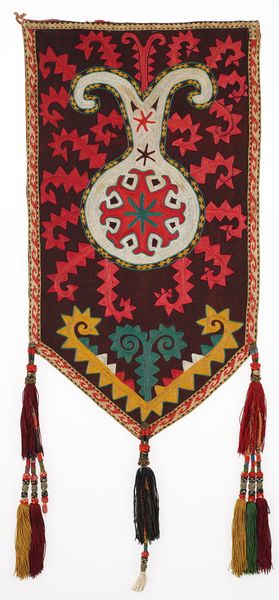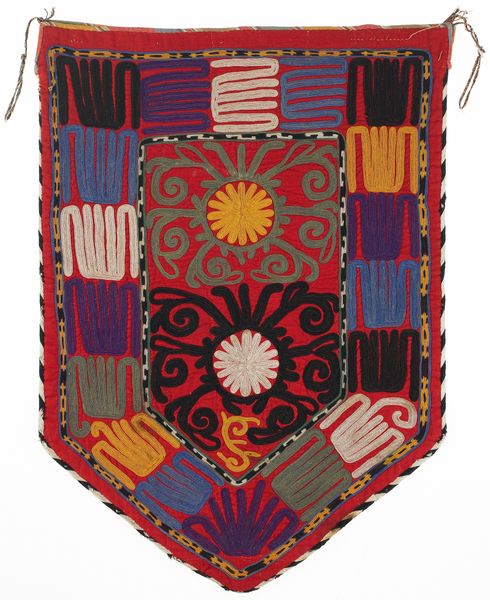
drawing, mixed-media, textile, cotton
#
african-art
#
drawing
#
mixed-media
#
sculpture
#
street art
#
textile
#
folk art
#
traditional architecture
#
folk-art
#
cotton
#
decorative-art
#
decorative art
Dimensions: 26 3/4 x 25 in. (67.95 x 63.5 cm) (without side tabs or fringe)
Copyright: Public Domain
This Tunic, or “faroumban,” was made by the Wolof people, but when exactly, we don’t know. Look at the way the lines are worked into stripes and patterns – the natural color variation in the thread makes them wobble and waver. It's like the whole surface is breathing. The textile is made of woven strips sewn together, with all kinds of embroidered embellishments and dangling charms. The texture is everything – you can imagine how this piece feels to the touch. The colors are muted, faded even, but somehow that adds to the overall depth. The little woven charms hanging off it are just so delightful. It’s like a painting where every mark is a story, a memory. It reminds me a bit of Sheila Hicks's work, how she approaches weaving with this incredible sense of freedom and intuition. This tunic feels like a similar kind of exploration, celebrating the possibilities of the medium. Art isn't about having all the answers, it's about embracing the questions, the uncertainties.
Comments
minneapolisinstituteofart almost 2 years ago
⋮
A man who feels sick or depressed, or who runs out of luck, consults a traditional healer, usually a herbalist. Sometimes the healer prescribes a special garment to be worn next to the skin, made of pure cotton and loaded with talismans. These talismans, made of cotton and wool, are reminiscent of the little leather amulets attached to hunters' garments. In the Senegalese Wolof language this type of tunic is called farumbaam, which means "donkey ribs." The name refers to the way in which the front and back of the tunic are connected by narrow strips of cloth.
Join the conversation
Join millions of artists and users on Artera today and experience the ultimate creative platform.
